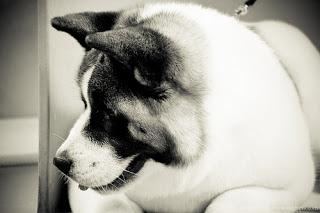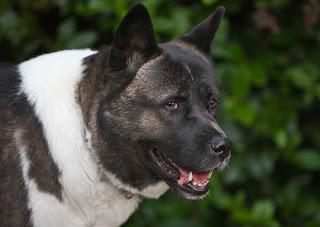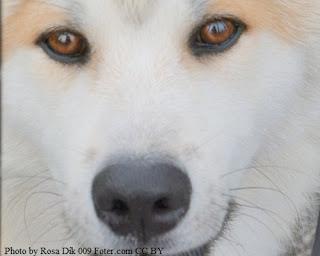By Stacey Gonzalez

Photo by gomagoti Foter.com CC BY-SA
Brave, bold and fiercely loyal, the Japanese Akita is a great companion for experience dog owners. With a little patience and a lot of training an Akita can be a real addition to your family, happily participating in your day to day activities right by your side.The Akita is a working dog that can weight anywhere between 70 to 130 pounds. Declared a national treasure in Japan the Akita dog is famous around the world thanks to one canine named Hachiko. Hachiko was an Akita who greeted his master every day at the train station after work. One day Hachiko’s master passed away while on the job and his loyal dog waited for him relentlessly. He continued to return to that spot and wait for his master every day until poor Hachiko died on March 8, 1935.
The Akita was named after a province in northern Japan where it is believed that the breed originated. The powerful and regal canines used to guard royalty as far back as the 1600s. What makes the Akita even more infamous is its special tie to an American Hero.

Photo by aldenchadwick Foter.com CC BY
Helen Keller brought the first Akita to the United States in 1937 upon her return from a trip to Japan. After visiting a statue of Hachiko in Shibuyu, Japan Helen Keller wanted a beautiful Akita of her own. The Japanese government proudly presented her with the first Akita to come to America. The breed’s popularity has been growing ever since.The Akita is known to be playful and amusing. It is very mouthy and enjoys carrying things in its mouth. Pulling a large stick around the back yard for an hour may be just what your Akita needs to enjoy its day. Some Akita’s will even lead their owners about the house by gently taking the hand in their large mouths. But the breed is also stubborn and fearless. An Akita will never back down and if you keep eye contact with an Akita for too long it will consider it a challenge. That is why Akita’s are not recommended for first time dog owners and take a lot of specialize training. You have to become the pack leader with these dogs.Akita’s need a lot of socializing with other dogs and pets otherwise they may not form bonds with your other furry family members. They can sometimes become aggressive with other dogs- especially dogs of the same sex. Akita’s have also been known to chase other pets around so it is best to carefully introduce your Akita to other pets while it is still a puppy. They are very wary of strangers and are extremely protective of their family members. When training an Akita it is important to be respectful and firm- never aggressive. Akita’s are gentle by nature and respond well to respect but an Akita will not back down and if you disrespect it the dog is likely to bark and be stubborn.
The breed is renowned for its loyalty and its deep attachment to its family and home life. The Akita is a very special kind of large breed dog that lives a happier life inside with its family rather than outside in the yard. It does require daily exercise for at least an hour. But be creative- if an Akita is sent out in the back yard to play fetch all the time it will become bored. That’s when the bold, stubborn nature of the breed will kick in and it will most likely do something to get your attention. So change it up- create new games that involve pulling, carrying and hunting things down.

An Akita can quickly become a part of the family and will follow its owner to the end of the earth. They are bold, beautiful and love their owners unconditionally. If you gain the trust of an Akita you will have it for life. It will protect you and honor you until you’re dying day- and maybe even beyond that.
Check out the featured cat breed for the month of March
